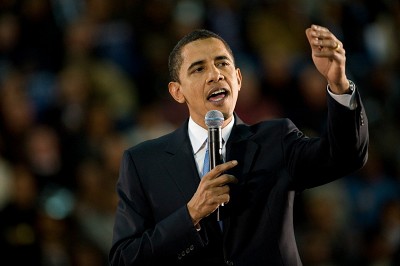The 5 Different Types of Speech Styles
Human beings have different ways of communicating. No two people speak the same (and nor should they). In fact, if you’ve paid any attention to people’s speeches around you, you might have already noticed that they vary from speaker to speaker, according to the context. Those variations aren’t merely coincidental.
The 5 Different Types of Speech Styles (Table)
| Types of Speech Styles | Description | Application | Example |
| Frozen/Fixed Style | -Formal rigid and static language, reliant on expertise;-Particular vocabulary, previously agreed upon, that rejects slang. | -Formal settings and important ceremonies.-Speaker to an audience without response. | -Presidential speech;-Anthem;-School creed;-The Lord’s prayer. |
| Formal Style | -Formal language; -Particular, previously agreed upon vocabulary yet more allowing of slang, contractions, ellipses and qualifying modal adverbials;-Writing and speaking. | -Speaking and writing in formal and professional settings, to medium to large groups of people;-Speaking and writing to strangers, figures of authority, professionals and elders. | -Formal meetings;-Corporate meetings;-Court;-Speeches and presentations; -Interviews;-Classes. |
| Consultative Style | -Semi-formal vocabulary;-Unplanned and reliant on the listener’s responses;-May include slang, contractions, ellipses and qualifying modal adverbials. | -Two-way communication and dialogue, between two or more people, without intimacy or acquaintanceship. | -Group discussions; -Teacher-student communication; -Expert-apprentice communication; -Work colleagues communication;-Employer-employee communication; -Talking to a stranger. |
| Casual Style | -Casual, flexible and informal vocabulary;-Unplanned and without a particular order;-May include slang, contractions, ellipses and qualifying modal adverbials. | -Relaxed and casual environments; -Two or more people with familiarity and a relatively close relationship. | -Chats with friends and family;-Casual phone calls or text messages. |
| Intimate Style | -Casual and relaxed vocabulary. -Incorporates nonverbal and personal language codes (terms of endearment, new expressions with shared meaning). -May include slang, contractions, ellipses and qualifying modal adverbials. | -Intimate settings, relaxed and casual environments; -Two or more people with an intimate bond. | -Chats between best friends, boyfriend and girlfriend, siblings and other family members, whether in messages, phone calls, or personally. |
The 5 Different Types of Speech Styles
Martin Joos, a famous german linguist and professor, was the first one to organize the speeches according to their variations, having come up with five speech styles, depending on their degree of formality:
1. Frozen Style (or Fixed speech)
A speech style is characterized by the use of certain grammar and vocabulary particular to a certain field, one in which the speaker is inserted. The language in this speech style is very formal and static, making it one of the highest forms of speech styles. It’s usually done in a format where the speaker talks and the audience listens without actually being given the space to respond.
Application: It’s generally reserved for formal settings such as important ceremonies (for instance, a ceremony at the royal palace or one in which a country’s president is present), weddings, funerals, etc.
Examples: a presidential speech, an anthem, and a school creed.
2. Formal Style
This style, just like the previous one, is also characterized by a formal (agreed upon and even documented) vocabulary and choice of words, yet it’s more universal as it doesn’t necessarily require expertise in any field and it’s not as rigid as the frozen style.
The language in this speech is respectful and rejects the use of slang, contractions, ellipses and qualifying modal adverbials. Oftentimes the speaker must plan the sentences before delivering them.
Application: Although it’s often used in writing, it also applies to speaking, especially to medium to large-sized groups. It’s also the type of speech that should be used when communicating with strangers and others such as older people, elders, professionals, and figures of authority.
Examples: meetings (corporate or other formal meetings), court, class, interview, speech, or presentation.

3. Consultative Style
The third level of communication it’s a style characterized by a semi-formal vocabulary, often unplanned and reliant on the listener’s responses and overall participation.
Application: any type of two-way communication, dialogue, whether between two people or more, where there’s no intimacy or any acquaintanceship.
Examples: group discussions, teacher-student communication, expert-apprentice, communication between work colleagues or even between employer-employee, and talking to a stranger.
4. Casual Style (or Informal Style)
As the name says, this style is characterized by its casualty, with a flexible and informal vocabulary that may include slang. It’s usually unplanned, pretty relaxed, and reliant on the fluid back and forth between those involved, without any particular order.
Application: used between people with a sense of familiarity and a relatively close relationship, whether in a group or in a one-on-one scenario.
Examples: chats with friends and family, casual phone calls, or text messages.
5. Intimate Style
This is the speech style that’s reserved for people who have a really close connection. It’s casual and relaxed and goes beyond words, as it incorporates nonverbal communication and even personal language codes, such as terms of endearment and expressions whose meaning are only understood by the participants, besides slang.
Application: used between people who share an intimate bond.
Examples: chats between best friends, boyfriend and girlfriend, siblings and other family members, whether in messages, phone calls, or personally.
Here are some of our top recommended Articles to Check next!
-

The 4 Methods or Types of Speech Delivery
-

What Makes a Great Presenter? 9 Key Qualities to Look for!
-

An Easy Guide to All 15 Types of Speech
4 Factors That Influence Speech Styles
Although knowing the definition and some examples of situations in which each speech style might apply is helpful, there are four important factors that are key in speech styles. These factors help the speakers understand when it is appropriate to use one style instead of the other. They are:
1. The Setting
The setting is essentially the context in which the speech shall take place. It’s probably the most important factor to be considered when choosing which speech style to use as nothing could be more harmful than applying the wrong speech style to the wrong setting.
Although it’s a factor that’s exhausted and diverse, to make things simple for you, I’ve divided them in three main categories:
- Formal Settings:
As the name states, this is usually the type of setting where the people should present themselves with a degree of formality because there’s little to no familiarity or even intimacy between those inserted in this context. The most appropriate speech styles for this type of setting are fixed and formal styles and, in some circumstances, consultative styles. A few examples of formal settings include: conferences, business meetings, etc
- Casual Settings:
In these settings, people are more relaxed and less uptight than in formal settings. Since there’s a degree of familiarity between those speaking, even though people are not necessarily intimate, the speaker can apply either consultative or casual speech styles. Some examples of these settings include weddings, company or team meetings, and school classes.
- Informal Settings:
These settings are more open than casual ones as there are almost no rules to how people should interact. Everyone in it either has a deep degree of familiarity or intimacy. The styles of speeches that are used in these settings are Casual and Intimate. A few examples of these settings are family and friends gatherings, private conversations, etc.
Misreading the setting can be really embarrassing and have devastating consequences. If, for instance, you make inappropriate jokes in a work meeting or use slang words, you could be perceived as unprofessional and disrespectful, and that could cost you your job.
2. The Participants
Your audience, the people to whom your speech is directed, or the people you interact with are decisive factors when choosing your speech style.
To put it simply:
- Reserve Frozen and Formal styles for people whom you respect and are not intimate or even familiar with, either because of their position in society or because of their position in relation to you. These can be authority figures or even superiors in your workplace and strangers.
- Use Consultative and Casual speech styles with people who, even though they are familiar to you (either because you both know each other or interact often), still owe them a certain level of respect. These can be people in your workplace such as your colleagues and business partners, people in school, elders and older family members, neighbors, acquaintances and even strangers.
- Feel free to use Intimate speech styles with anyone who you share an intimate bond with. These can be your friends and your immediate and extended family members.
3. The Topic
Speech styles can give appropriate weight to serious topics, just as they can help alleviate the heaviness of certain topics. There’s no specific rule of which style to use with each topic, actually, when it comes to topics, the choice should be more intuitive and keep in mind the other factors.
For example, sometimes, when making a presentation about a serious topic at a conference, you might want to mix formal speech with a more consultative or casual speech by sliding in a joke or two in between your presentation, as this helps lighten up the mood.
4. The Purpose of The Discourse or Conversation
The purpose of your discourse is your main motivation for speaking. Just like with the topic, when it comes to choosing the speech style taking into account the purpose, the choice is mostly intuitive and keeps in mind the other factors.
You should remember never to mix a business-centered discussion, where the purpose is mostly professional and formal, with a mainly informal speech of speaking.

Speaker Styles
Just like there’s more than one speech style, there’s more than one speaker style:
- Content-rich speaker:
A content-rich speaker is one whose aim is to use the speech to inform. He is factual and very objective and focused on providing all the information the audience or receptor of the message needs.
A man speaking in a presentation could be an example of this, or even a lawyer defending a case in court.
- Funny or humorous speakers:
As the name already suggests, this type of speaker uses humor as a tool to help them deliver their message. Even when delivering facts, they make jokes to lighten things up and break the tension.
Stand-up comedians are a great example of this type of speaker.
- Storyteller:
This type of speaker usually relies on the story format to deliver his message; whether it’s factual or not is not relevant as long as the main message behind the story is relevant to the receptor.
Most TED talkers or motivational speakers are great examples of this type of speaker.
Usually, the type of speaker is not fixed in each speech style; one person can be many types of speakers depending on the speech style that they are using and keeping in mind the factors that influence the choice of the speech style.
Make sure you weigh all factors equally before choosing a speech style. You don’t want to be THAT person bringing up an intimate subject to a friend in front of a group of strangers during a business meeting where the subject has nothing to do with whatever you’re talking about.
What’s The Importance of Speech Styles In Communication
Using and knowing speech styles is the key to effective communication. Choosing the right way to communicate in different settings and with different people is what separates a good communicator from a bad communicator.
Knowing the speech styles and the rules that apply to each of them saves you from embarrassment and positions you as someone of principles and respectful, especially in formal and conservative settings.
Besides that, people tend to gravitate more towards and get influenced by good communicators; therefore, learning something new in that area and improving the quality of your speech and presentations will only benefit you.
Further Readings
Types of Speech Styles | PDF | Sentence (Linguistics) | Cognitive Science- SCRIBD







